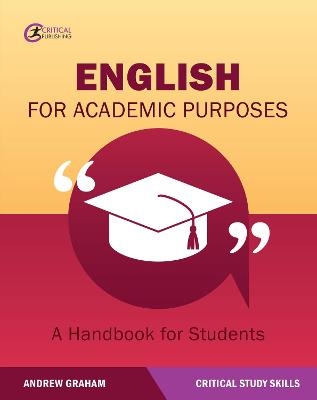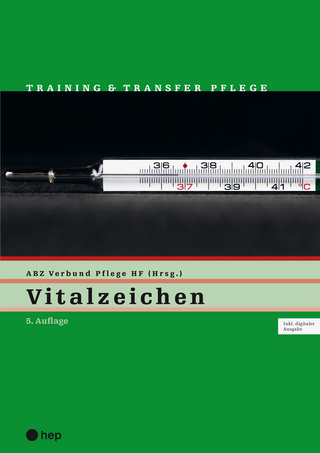
English for Academic Purposes
Critical Publishing Ltd (Verlag)
978-1-912508-20-4 (ISBN)
Useful as a course book or as a self-study guide, this text is essential reading for all international students studying for a British qualification at university. It provides a clear guide to the areas that need to be considered in order to research and produce a well presented and cohesive piece of academic writing. The steps outlined, and the language used, are accessible, and graded to a level that steadily introduces new writing concepts to students studying for a degree in a second or additional language. In particular it covers planning, conducting research, critical thinking, structuring an essay, use of sources and referencing, and feedback and revision.
Andrew Graham is the award leader for an International Foundation Programme (IFP) run in collaboration between Chengdu University of Technology, China and Oxford Brookes University, UK. Andrew has worked closely with ESL students for over 8 years, teaching a range of modules that centre around academic research and writing, group-work, presentation skills, and critical thinking. He has worked on syllabus design across these modules and created a variety of resources that are appropriate for international students studying for a British qualification.
Foreword
Introduction
1. Academic Writing Overview
Unit 1.1 – What is Academic Writing?
Unit 1.2 – Features of Academic Writing
2. Understanding the Topic & Planning
Unit 2.1 – Understanding Assessment Tasks
Unit 2.2 – Creating New Ideas
Unit 2.3 – Planning an Academic Paper
3. Academic Arguments
Unit 3.1 – Arguments in Writing
Unit 3.2 – Critical Thinking
Unit 3.3 – Identifying Fallacies
4. Structure: Introductions
Unit 4.1 – General Statements
Unit 4.2 – Thesis Statements & Essay Maps
5. Structure: Main Body Paragraphs
Unit 5.1 – Topic Sentences
Unit 5.2 – Presenting Your Ideas
Unit 5.3 – Concluding Sentences
Unit 5.4 – Cohesion
6. Structure: Conclusions
Unit 6.1 – Elements of a Conclusion
Unit 6.2 – Final Ideas
7. Finding Evidence
Unit 7.1 – Types of Sources
Unit 7.2 – Types of Evidence
Unit 7.3 – Conducting Research
Unit 7.4 – Reliability
8. Reading Techniques
Unit 8.1 – Reading Comprehension
Unit 8.2 – Skimming & Scanning
Unit 8.3 – SQ3R and KWL
9. Using Others’ Ideas
Unit 9.1 – Preparation
Unit 9.2 – Paraphrasing
Unit 9.3 – Summarising
Unit 9.4 – Translations
Unit 9.5 – Quotations
Unit 9.6 – Reporting Verbs
10. Referencing.................................................................. 139
Unit 10.1 – Understanding Referencing
Unit 10.2 – Citations
Unit 10.3 – Reference Lists
11. Revision Techniques
Unit 11.1 – Feedback
Unit 11.2 – Revising Paragraphs
12. Proofreading
Unit 12.1 – Spelling & Grammar
Unit 12.2 – Formatting
Unit 12.3 – Writing Checklists
Unit 12.4 – What Not to Write
Exercises
| Erscheinungsdatum | 17.01.2019 |
|---|---|
| Reihe/Serie | Critical Study Skills |
| Zusatzinfo | 50 Diagrams |
| Verlagsort | Northwich |
| Sprache | englisch |
| Maße | 219 x 276 mm |
| Gewicht | 590 g |
| Themenwelt | Schulbuch / Wörterbuch ► Schulbuch / Allgemeinbildende Schulen |
| Schulbuch / Wörterbuch ► Wörterbuch / Fremdsprachen | |
| Sozialwissenschaften ► Pädagogik | |
| ISBN-10 | 1-912508-20-6 / 1912508206 |
| ISBN-13 | 978-1-912508-20-4 / 9781912508204 |
| Zustand | Neuware |
| Haben Sie eine Frage zum Produkt? |
aus dem Bereich


